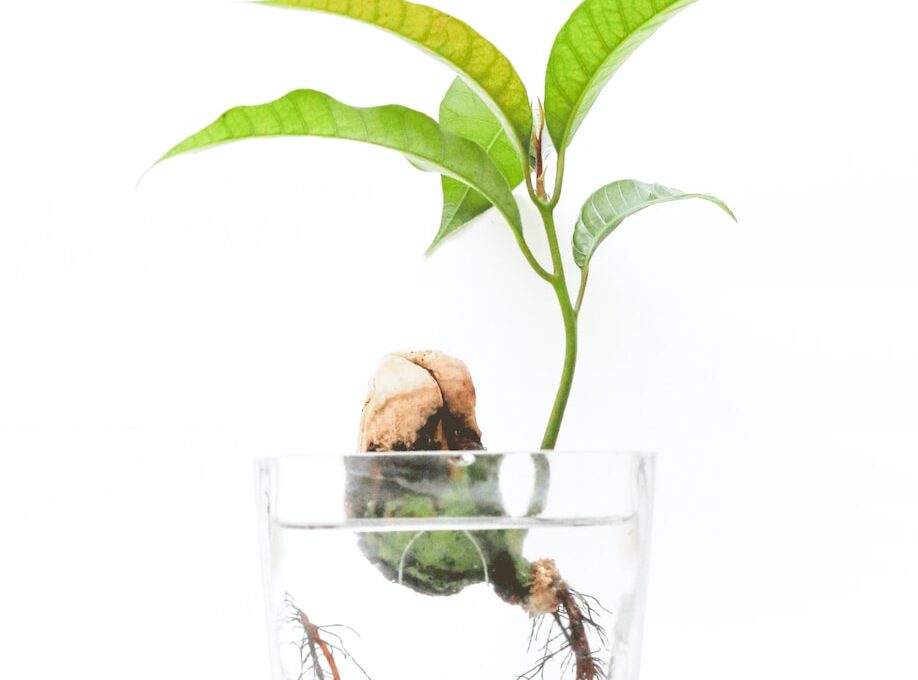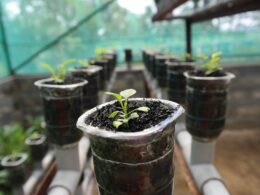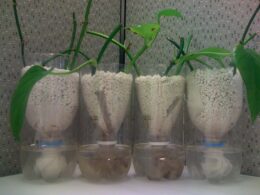Are you a fan of spinach? Do you choose to buy hydroponic spinach because of its convenience and year-round availability?
While hydroponic spinach may seem like a great option, there are some concerns you should be aware of. One of the main issues with hydroponic spinach is the lack of nutrient diversity in the growing process. Unlike traditional soil-grown spinach, hydroponic spinach is grown in water with added nutrients.
However, these nutrients are often limited to a few basic elements, which may not provide the full range of vitamins and minerals that you need. In this article, we will explore the problems with hydroponic spinach and what you can do to make informed choices about your food.
The Rise of Hydroponic Spinach
With the increasing popularity of growing leafy greens indoors, it’s no surprise that many growers are turning to innovative methods. One of the most popular methods is hydroponic farming.
Hydroponic spinach is grown in nutrient-rich water, without soil, and in controlled conditions. This method is known for producing high yields in less time and with less water than traditional farming.
Vertical farming is another popular method for growing hydroponic spinach. This method uses stacked layers of vertical growing beds to save space and increase efficiency. Hydroponic spinach grown in vertical farms can be harvested year-round, regardless of weather conditions. This is a great advantage for regions with harsh climates or limited growing seasons.
Hydroponic farming also promotes sustainability practices. Because it uses less water and space than traditional farming, hydroponic spinach has a smaller carbon footprint. Additionally, hydroponic farming reduces the need for pesticides and herbicides, making it a safer option for both the environment and consumers.
As more people become aware of the benefits of hydroponic farming, the popularity of hydroponic spinach is likely to continue to rise.
Lack of Nutrient Diversity in Hydroponic Systems
The limited range of nutrients available in hydroponic systems can contribute to potential deficiencies in the nutritional value of the crop. While hydroponic spinach may be convenient and easy to grow, it may not be the healthiest option for your diet.
Nutrient deficiencies can lead to a variety of health problems, including weakened immune systems and decreased energy levels. To combat these nutrient deficiencies, alternative methods of growing spinach should be considered. One option is to grow spinach in soil, which provides a wider range of nutrients for the plant to absorb.
Another option is to supplement hydroponic systems with additional nutrients, such as organic fertilizers or mineral solutions. By incorporating these alternative methods, you can ensure that your spinach is packed with the nutrients your body needs.
In the end, it’s important to be mindful of the nutritional value of the food you consume. While hydroponic spinach may be a convenient option, it may not provide the same level of nutrients as spinach grown in soil or supplemented with additional nutrients. By exploring alternative methods of growing spinach, you can ensure that you’re getting the most out of your diet and promoting a healthy lifestyle.
Are the Problems with Hydroponic Spinach Similar to Those with Hydroponic Tomatoes?
When examining the problems with hydroponic tomatoes, it’s essential to consider if similar issues persist with hydroponic spinach. While both plants share the same growing method, each may face distinct challenges. However, it’s crucial to assess whether problems like nutrient deficiencies, disease susceptibility, or environmental imbalances are common in both hydroponically grown spinach and tomatoes.
Concerns about Contamination
When growing plants in hydroponic systems, you may encounter concerns about contamination. This can include the risks of harmful bacteria and chemicals that can affect the health of your plants and even your own health.
Maintaining a healthy growing environment can be a challenge, but it’s crucial to ensure the safety and quality of your produce.
Risks of Harmful Bacteria and Chemicals
Be aware of potential health risks from harmful bacteria and chemicals in your leafy greens grown through hydroponic methods. Although hydroponic spinach may seem like a healthier option due to its controlled environment and lack of soil, there are still risks associated with contamination.
In fact, some studies have found that hydroponic crops can be more susceptible to harmful bacteria like E. coli and salmonella due to the lack of soil and natural microbial balance. Additionally, there have been concerns about chemical contamination in hydroponic spinach.
Pesticides and fertilizers used in hydroponic systems can potentially seep into the water supply and be absorbed by the plants. It’s important to research the farming methods of your spinach supplier and choose a reputable source to minimize the risks of harmful bacteria and chemical contamination in your leafy greens.
Challenges in Maintaining a Healthy Growing Environment
Maintaining a healthy growing environment can be a real challenge, but with proper care and attention, your leafy greens will thrive and nourish your body.
Temperature control and pH balance are two crucial factors to consider when growing hydroponic spinach. The ideal temperature for spinach growth is between 65-75°F, and it’s essential to maintain a stable environment.
Any sudden fluctuation in temperature can cause stress on the plants, making them vulnerable to pests and diseases. pH balance is another essential factor that affects the growth of hydroponic spinach.
The ideal pH range for spinach growth is between 5.5-6.5. If the pH level is too high or too low, it can affect the plant’s ability to absorb nutrients, leading to stunted growth and yellowing leaves.
Regular monitoring and adjustment of the pH level are necessary to ensure healthy growth and optimal nutrient uptake. With proper temperature control and pH balance, your hydroponic spinach will thrive, providing you with a healthy and delicious source of greens all year round.
Potential Solutions and Alternatives
You can explore other options for growing leafy greens that don’t require soil and can provide a steady supply of fresh produce. Vertical farming is one such option that has gained popularity in recent years. This method involves growing plants in stacked layers, using artificial lighting and nutrient-rich water instead of soil. This allows for a more controlled environment, reducing the risk of pests and diseases that can affect traditional soil-based options.
Another alternative to hydroponic spinach is aeroponics. This method involves suspending plants in the air and misting them with a nutrient solution. This allows for even more control over the growing environment, as the plants are not subjected to the limitations of soil or water. Aeroponic systems can be more expensive to set up than other options, but they offer the potential for higher yields and faster growth rates.
In addition to these alternatives, there are also traditional soil-based options that can be explored. While they may not offer the same level of control over the growing environment as hydroponics or aeroponics, they can still provide a steady supply of fresh produce. By using high-quality soil and carefully managing the growing conditions, you can produce healthy and nutritious spinach that is free from harmful chemicals and pesticides.
Conclusion: Making Informed Choices about Hydroponic Spinach
By exploring alternative methods for growing leafy greens, you can make informed choices about hydroponic spinach. While hydroponics may provide a controlled environment for producing fresh and nutritious produce, it’s important to consider the potential health benefits and environmental impact.
When it comes to health benefits, hydroponic spinach may lack the same nutrient density as traditionally grown spinach. This is because hydroponic systems rely on synthetic nutrients rather than the natural nutrients found in soil. Additionally, some experts have raised concerns about the safety of consuming produce grown in nutrient solutions, as there may be a risk of contamination or exposure to harmful chemicals.
From an environmental perspective, hydroponic systems require significant energy inputs to maintain the controlled environment necessary for plant growth. This can contribute to greenhouse gas emissions and other environmental impacts, particularly if the energy is sourced from non-renewable sources.
By choosing alternative methods such as soil-based farming or regenerative agriculture, you can support more sustainable and environmentally friendly practices while still enjoying the health benefits of leafy greens.
Incorporating a variety of farming methods into your diet can help you make informed choices about the food you consume. By considering both the health benefits and environmental impact of hydroponic spinach, you can better understand the trade-offs involved in choosing this method of production. Ultimately, the choice is yours to make, but by exploring alternative methods and supporting sustainable farming practices, you can contribute to a healthier and more sustainable food system.
Frequently Asked Questions
How does hydroponic spinach compare in taste and texture to traditionally grown spinach?
When it comes to taste comparison and nutritional value, hydroponic spinach holds its own against traditionally grown spinach. Many people find hydroponic spinach to be even more flavorful and tender than its soil-grown counterpart.
Plus, hydroponic spinach is packed with nutrients like iron, calcium, and vitamin C, making it a healthy addition to any diet. And because it’s grown in a controlled environment, you can rest assured that it’s free from harmful pesticides and contaminants.
So next time you’re in the market for some spinach, give hydroponic a try – your taste buds (and your body) will thank you!
Are there any ethical concerns surrounding the use of hydroponic systems for growing spinach?
When it comes to hydroponic spinach, there are some ethical concerns and sustainability implications to consider.
One issue is the amount of energy required to power these systems, which can contribute to greenhouse gas emissions. Additionally, there are concerns about the use of chemical fertilizers and pesticides in these systems, which can have negative impacts on the environment and human health.
However, there are also potential benefits to hydroponic systems, such as the ability to grow crops in areas with limited access to water or land.
Ultimately, it’s important to carefully consider the potential ethical and environmental impacts of hydroponic spinach before making a decision about whether or not to incorporate it into your diet.
How does the cost of hydroponic spinach compare to traditionally grown spinach?
When it comes to the cost comparison between hydroponic spinach and traditionally grown spinach, it’s important to consider market demand. Hydroponic spinach is generally more expensive, due to the upfront costs of setting up the hydroponic system. However, as demand for hydroponic produce increases, the cost may come down.
It’s worth noting that while traditional spinach may be cheaper, hydroponic spinach often has a longer shelf life and is less likely to be contaminated with harmful bacteria. So, while the cost may be higher, the benefits of hydroponic spinach may outweigh the added expense for those looking for a safer, longer-lasting option.
Is hydroponic spinach more or less environmentally sustainable than traditionally grown spinach?
When it comes to sustainability and nutritional value, hydroponic spinach is a great alternative to traditionally grown spinach. Sustainability comparison shows that hydroponic spinach uses significantly less water and land, and doesn’t require pesticides or herbicides, making it a more eco-friendly option.
Furthermore, nutritional value comparison shows that hydroponic spinach contains higher levels of vitamins and minerals due to its controlled environment. So, if you’re looking for a safe and sustainable option for your spinach, hydroponic spinach is definitely worth considering.
Are there any health risks associated with consuming hydroponic spinach?
When it comes to consuming hydroponic spinach, you may wonder about any potential health risks. It’s important to note that hydroponic spinach is regulated by safety measures to ensure that it’s safe for consumption and free from contaminants.
However, it’s still important to understand any nutritional differences between hydroponic and traditionally grown spinach. While studies have shown some small variations in nutrient content, both types of spinach still provide valuable vitamins and minerals.
Ultimately, consuming spinach in any form can provide numerous health benefits, but it’s always a good idea to follow proper food safety guidelines and consult with a healthcare professional if you have any concerns.
Conclusion
So, you’ve learned about the rise of hydroponic spinach and the problem of lack of nutrient diversity in hydroponic systems. You’ve also heard concerns about contamination. But what can you do with this information?
It’s important to remember that not all hydroponic spinach is created equal. Look for suppliers who prioritize nutrient diversity and take measures to ensure their products are free from contamination.
Alternatively, consider growing your own spinach in a soil-based system. This way, you can ensure maximum nutrient diversity and have control over potential contaminants.
By making informed choices about hydroponic spinach, you can enjoy the convenience and nutritional benefits of this growing trend while minimizing potential risks.








